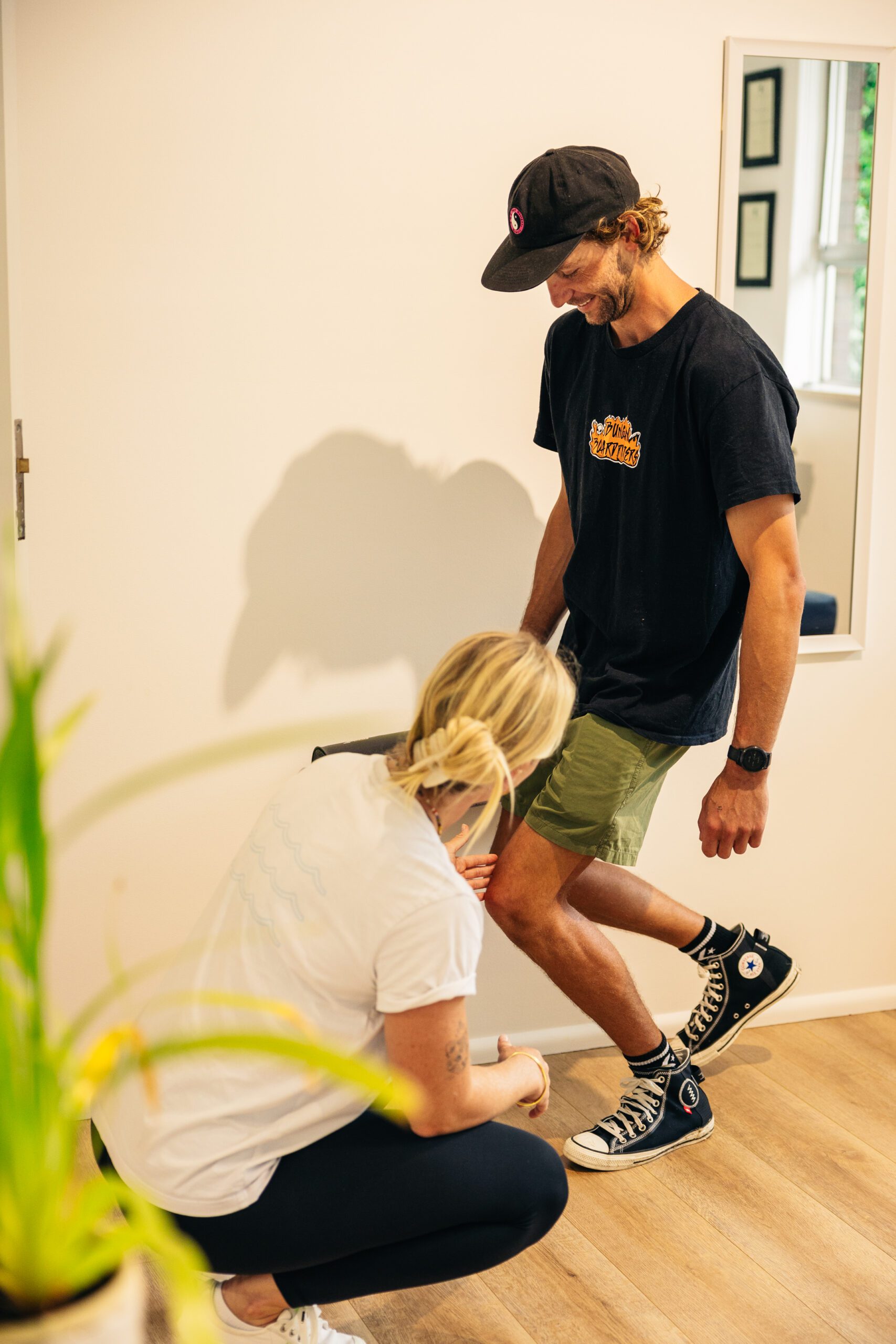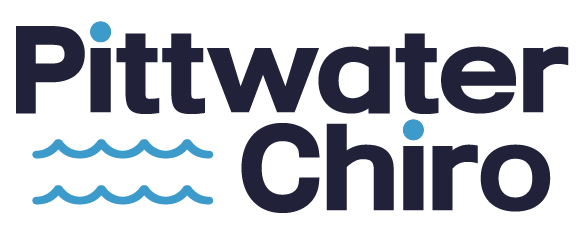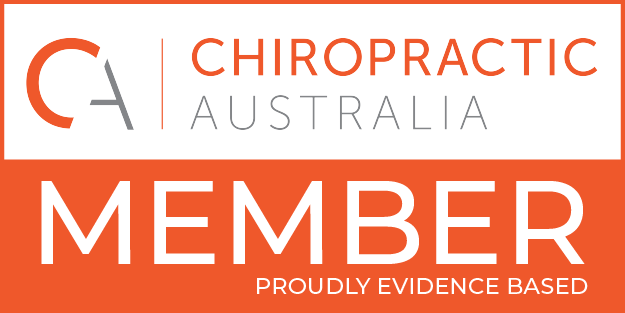Attending my first Dynamic Neuromuscular Stabilization (DNS) course in Newcastle during my first year out of university, I was confused about everything. I had a thorough understanding of exercise rehabilitation for university. However, I couldn’t quite wrap my head around how lying on the floor in the same position as a 3-month-old baby would help me to move better, surf better and have more fluid movement in all my sports.
The next morning, after a long day of rolling and crawling around the floor like a developing child, I woke up and went for an early surf. I surfed smoothly and effortlessly and even did a couple of turns that I thought were beyond my skill level. I don’t think I could put it down to a good night’s sleep, because I was staying in a pub and my room was directly above the stage of a wild band who played until the early hours. From then on I was pretty hooked on finding out more about this exercise method and how it helped me so much in one day.
Dynamic Neuromuscular Stabilization (DNS) is an exercise rehabilitation method that stimulates the brain’s movement centres to activate natural movement patterns and biomechanics. This is returning to the movement patterns we had as kids. Have you ever seen a one-year-old squat and thought, “I wish I could move like that?!”. DNS helps us to move as our bodies were designed to, restoring our innate stabilizing functions.
Dynamic Neuromuscular Stabilization Origins
Originating from the Rehabilitation Prague School, DNS was born from a collaboration of work and influence by talented research professionals, such as Pavel, Lewit, and Janda. DNS aims to help individuals regain control of their posture, movement, and gait. By focusing on developmental kinesiology, it allows us to ‘relearn’ the motor control patterns established during early childhood.
During the critical early years, babies develop control of their movement through patterns, positions, and reflexes. These fundamentals of movement are almost automatically embedded in all of us during the first two years of life. Unfortunately, repetitive movements, prolonged sitting or standing postures, and injuries can cause us to lose these natural patterns. DNS seeks to unlock and restore these patterns by encouraging us to move as babies do, allowing us to relearn natural movement patterns.
Why is Dynamic Neuromuscular Stabilization Significant?
Often individuals with hypermobility, muscle tightness, and stiff joints have underlying stability problems. Addressing these effectively requires examining movement habits and body awareness, which can be seen in breathing patterns, differences in posture, and varied muscle activation.
Functional stabilization is necessary for any movement, whether sitting, standing, walking, or squatting, and should ideally be something that comes naturally to us, without us having to think about it. This involves the use of our deep neck flexors, diaphragm, abdominal wall, pelvic floor, and deep spinal muscles in a coordinated manner. These muscles form our integrated stabilizing system, which is crucial for all movement.
Dysfunction in any of these muscles can lead to an imbalanced and overloaded stabilizing system, resulting in sub-optimal movement. This imbalance can cause some muscles to overcompensate, become tight and sore, and eventually succumb to injury.
The Science Behind Developmental Kinesiology (DK)
Developmental Kinesiology (DK) is based on the theory that human motor function development in early childhood is genetically predetermined and follows a predictable pattern. As the brain matures, infants can control posture, achieve upright positions against gravity, and move purposefully through muscle activity. DK emphasizes that these central movement patterns are inborn and “hard-wired.” For example, infants instinctively know when and how to lift their heads, grasp objects, roll over, creep, or crawl. These movements occur automatically in a specific developmental sequence as the brain matures.
There is a strong link between brain maturation and the structural development of bones, muscles, and other soft tissues. Brain maturation influences motor pattern development, which in turn affects structural development.
A key premise of DNS is that joint position depends on the stabilizing function and coordination of both local and distant muscles to ensure a centred joint position in the kinetic chain. The quality of this coordination is critical for joint function and influences local, regional, and global anatomical and biomechanical parameters. Treatment aims to restore impaired stabilizing patterns to match these ideal patterns as defined by DK closely.
How Do We Approach and Correct These Problems?
The DNS treatment approach is based on a careful assessment of stabilization and movement quality, aiming to restore the integrated stabilizing spinal system (ISSS) through specific functional exercises inspired by the developmental positions of a healthy baby. These exercises activate the optimal patterns necessary for stabilization in closed kinetic chain movements (like support activities) and dynamic open kinetic chain movements (such as reaching, throwing, stepping forward, or kicking).
Each exercise adheres to fundamental principles:
1. Restore Proper Respiratory Pattern and Intra-Abdominal Pressure (IAP) Regulation: Ensuring correct breathing and pressure management.
2. Establish Quality Support for Dynamic Extremity Movements: Providing stable support for movements of the arms and legs.
3. Ensure Well-Centered Joints: Maintaining proper joint alignment throughout movements.
The ultimate goal is to “train the brain” to maintain central control, joint stability, and optimal movement quality. Through repetition, the central control system establishes an automatic model, integrating ideal stabilization patterns into everyday movements and skills. This not only reduces the risk of injuries and pain syndromes from overloading but also enhances athletic performance.
What Do Dynamic Neuromuscular Stabilization Exercises Look Like?
Initial DNS exercises often involve learning correct breathing techniques and holding developmental poses or positions. From there, we progress to movements like crawling, rolling, sitting, and squatting. As you advance, exercises may include tripod stances, lunging, and balancing. As a chiropractor, I tailor exercise formats to match my patients’ specific lifestyle, work, or sports requirements.
These exercises can be done with minimal equipment, making them ideal for practice anywhere, anytime. For more advanced athletes, these positions can challenge deep muscles and the nervous system, improving performance in high-level sports.
Who Can Benefit from Dynamic Neuromuscular Stabilization?
The benefits of DNS are wide-ranging, making it suitable for almost anyone seeking a new approach to exercise and wellness:
- Elderly individuals, with or without chronic conditions and injuries
- Athletes, both professional and recreational, looking to improve performance and wellbeing
- Average individuals seeking wellness and improved physical longevity
- Those with chronic injuries or tightness, such as muscle tears, disc injuries, or repetitive stress injuries
DNS is particularly beneficial for:
- Muscle weakness
- Stability in hypermobile individuals
- Improving balance and coordination
- Enhancing breath control
- Reducing stress and anxiety
Why do I love Dynamic Neuromuscular Stabilization?
As someone who is naturally hypermobile, any exercise that incorporates a strong emphasis on stability and control greatly benefits me, which is why I find Dynamic Neuromuscular Stabilization so effective. But the amazing thing about DNS is that it isn’t a recipe approach to exercise rehab. For example, I’ve got a history of meniscal injuries in my knee and a hip impingement, I was given the same advice by various health professionals; strengthen the glutes, the hip stabilisers, and strengthen the quads. I agree, they are important muscles to strengthen following those types of injuries. But, the trouble was I didn’t get any improvements to my pain or dysfunction from strengthening these muscles.
It wasn’t until I started practising DNS exercises that I noticed significant changes. I think this is because the muscles I was advised to strengthen weren’t weak, they were just inhibited, or not being used at the right time with a stable trunk. In the simplest terms, there was a disconnect along the chain from my brain to my muscles in my trunk, hips and subsequently along my lower limb. DNS focuses on intricacies and details other exercises might not pick up on, and becomes a lot more personalised to the individual, which is why I think it’s an invaluable tool to incorporate in your recovery or performance journey.
References
Frank C, Kobesova A, Kolar P. Dynamic neuromuscular stabilization & sports rehabilitation. Int J Sports Phys Ther. 2013 Feb;8(1):62-73. PMID: 23439921; PMCID: PMC3578435.
Kolar P, Sulc J, Kyncl M, Sanda J, Cakrt O, Andel R, Kumagai K, Kobesova A. Postural function of the diaphragm in persons with and without chronic low back pain. J Orthop Sports Phys Ther. 2012 Apr;42(4):352-62. doi: 10.2519/jospt.2012.3830. Epub 2011 Dec 21. PMID: 22236541.
Kolar P, Sulc J, Kyncl M, Sanda J, Neuwirth J, Bokarius AV, Kriz J, Kobesova A. Stabilizing function of the diaphragm: dynamic MRI and synchronized spirometric assessment. J Appl Physiol (1985). 2010 Oct;109(4):1064-71. doi: 10.1152/japplphysiol.01216.2009. Epub 2010 Aug 12. PMID: 20705944.
Rajasekar Sannasi, Craig E. Morris, Andrew Busch, Thrishala Noronha, Vidhya Krishna P, Martin Stribrny, Alena Kobesova. Inter-rater reliability of the dynamic neuromuscular stabilization diaphragm tests among individuals with non-specific low back pain and neck pain. Musculoskeletal Science and Practice (2024) Volume 71. 102949. ISSN 2468-7812. doi:10.1016/j.msksp.2024.102949.







